Liquid waste disposal in the laboratory
Biological liquid waste disposal in the lab
Best Practices
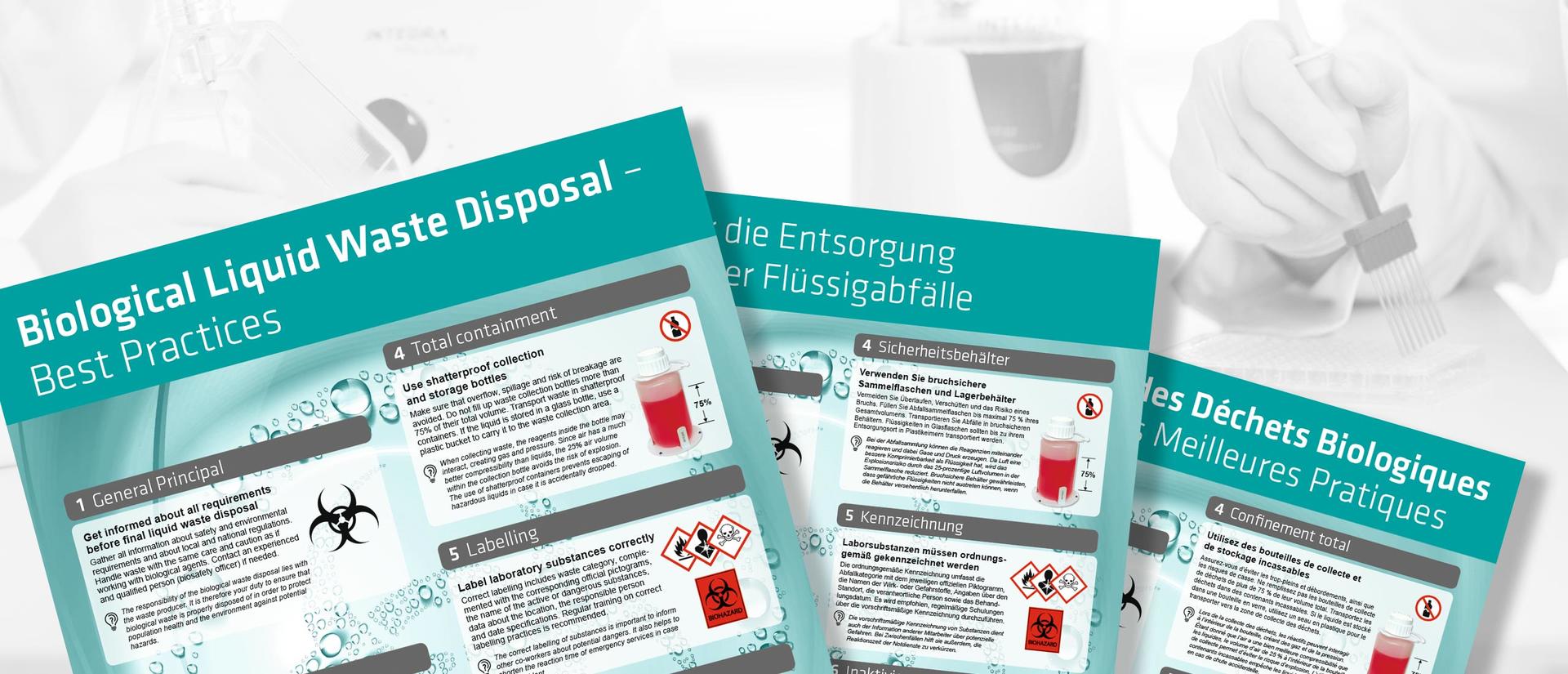
Put safety first. Improper handling of biological liquid waste in laboratories can expose lab workers, facilities staff – such as cleaning personnel – and even external parties to a risk of contamination. Everyone in your lab should be trained to dispose of biological liquid waste correctly.
This article outlines vital best practice tips which can also be downloaded as an illustrated poster.
General Principal: Get informed about all requirements before final disposal
Gather all information about safety and environmental requirements and about local and national regulations. Handle waste with the same care and caution as if working with biological agents. Contact an experienced and qualified person (biosafety officer) if needed.
Note: The responsibility of the biological waste disposal lies with the waste producer. It is therefore your duty to ensure that biological waste is properly disposed of in order to protect population health and the environment against potential hazards.

Waste segregation: Use separate waste container for each waste category
Waste segregation is key for successful waste management in a laboratory. Organize your waste management according to the different categories of liquid waste: e.g. biological, chemical, radioactive or human / animal material containing wastes. Use a separate waste container for each category.
Note: Proper waste segregation helps to reduce hazardous waste volumes, minimize risks in handling, transport and storage and decreases waste management costs.
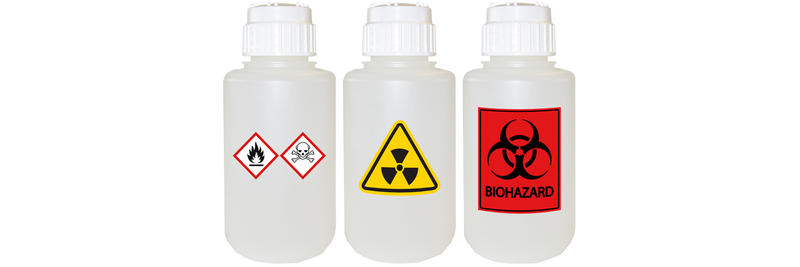
Safe liquid transfer: Protect yourself and others by using appropriate tools
Vacuum systems are widely used for aspirating and collecting biological liquid waste prior to disposal. Protect the pump from liquid overflow using a hydrophobic filter and either a liquid trap or a liquid level alarm system.
Avoid the formation of drops and aerosols by employing aspiration tools matching the labware to be aspirated from, such as tubes, dishes, bottles, T-flasks and well plates.
Note: Each transfer and manipulation of biohazardous liquid may expose the operator to harmful situations. By avoiding dripping, spillage and formation of aerosols, these risks can be minimized.
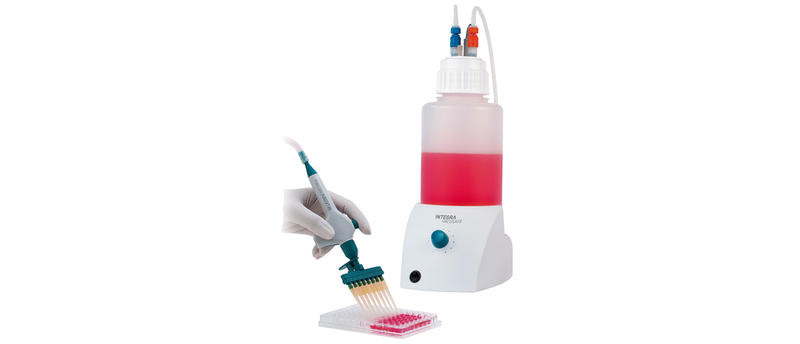
Total containment: Use shatterproof collection and storage bottles
Make sure that overflow, spillage and risk of breakage are avoided. Do not fill up waste collection bottles more than 75% of their total volume. Transport waste in shatterproof containers. If the liquid is stored in a glass bottle, use a plastic bucket to carry it to the waste collection area.
Note: When collecting waste, the reagents inside the bottle may interact, creating gas and pressure. Since air has a much better compressibility than liquids, the 25% air volume within the collection bottle avoids the risk of explosion. The use of shatterproof containers prevents escaping of hazardous liquids in case it is accidentally dropped.
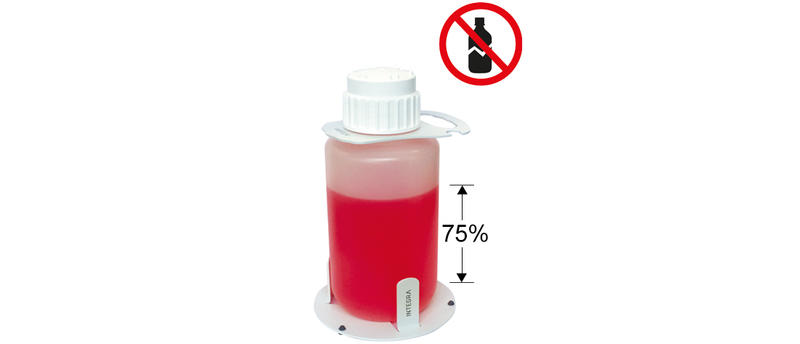
Labelling: Label laboratory substances correctly
Correct labelling includes waste category, complemented with the corresponding official pictograms, the name of the active or dangerous substances, data about the location, the responsible person and date specifications. Regular training on correct labelling practices is recommended for every laboratory.
Note: The correct labelling of substances is important to inform other co-workers about potential dangers. It also helps to shorten the reaction time of emergency services in case of an incident.
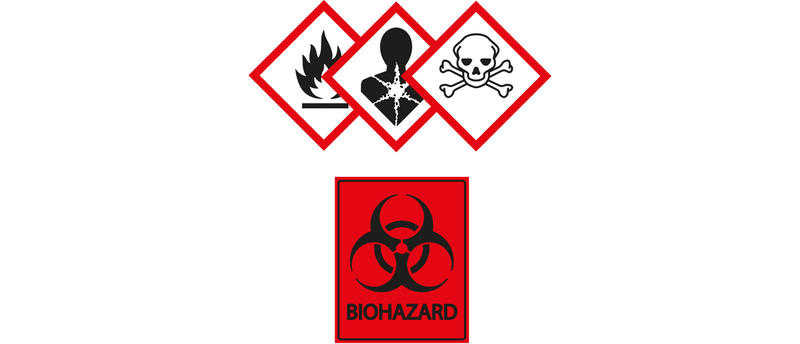
Deactivation: Choose proper deactivation method
It is important to deactivate the biological substances before further treatment or handling. Choose the deactivation method according to the nature of the biological agents and biosafety levels. Local or national regulations must be complied with. Evaluate the compatibility of the method with other substances within the waste. Check also the compatibility with instrument and material used prior to implementation.
Note: Transforming active substances into neutral products helps to reduce biological risks. In addition, it may also help reducing the volume of special waste that has to be handed over to third parties for special treatment.
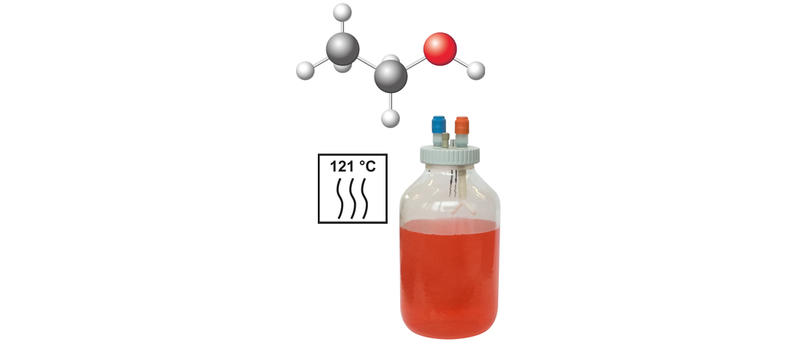
Water waste or special liquid waste?
Identify the classification of the inactivated biological agents and the presence of other hazardous substances. Decide, in accordance with your local and national regulations, if your waste falls under the category of water waste or special liquid waste. Avoid accumulation of large volumes of waste by disposing of waste regularly.
Note: Reduces potential risks and avoids treating waste inappropriately. Furthermore, unnecessary high costs for waste disposal can be avoided.
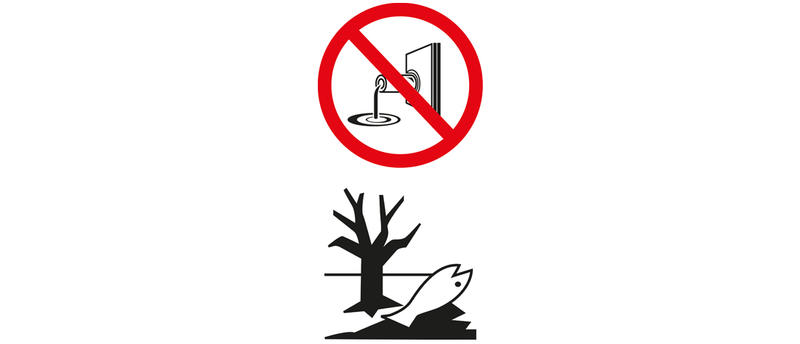
Summary
Here's a summary of how to correctly dispose of biological liquid waste in the lab:
- General Principal: Get informed about all requirements before final disposal
- Waste segregation: Use separate waste container for each waste category
- Safe liquid transfer: Protect yourself and others by using appropriate tools
- Total containment: Use shatterproof collection and storage bottles
- Labeling: Label laboratory substances correctly
- Deactivation: Choose proper deactivation method
- Water waste or special liquid waste?























